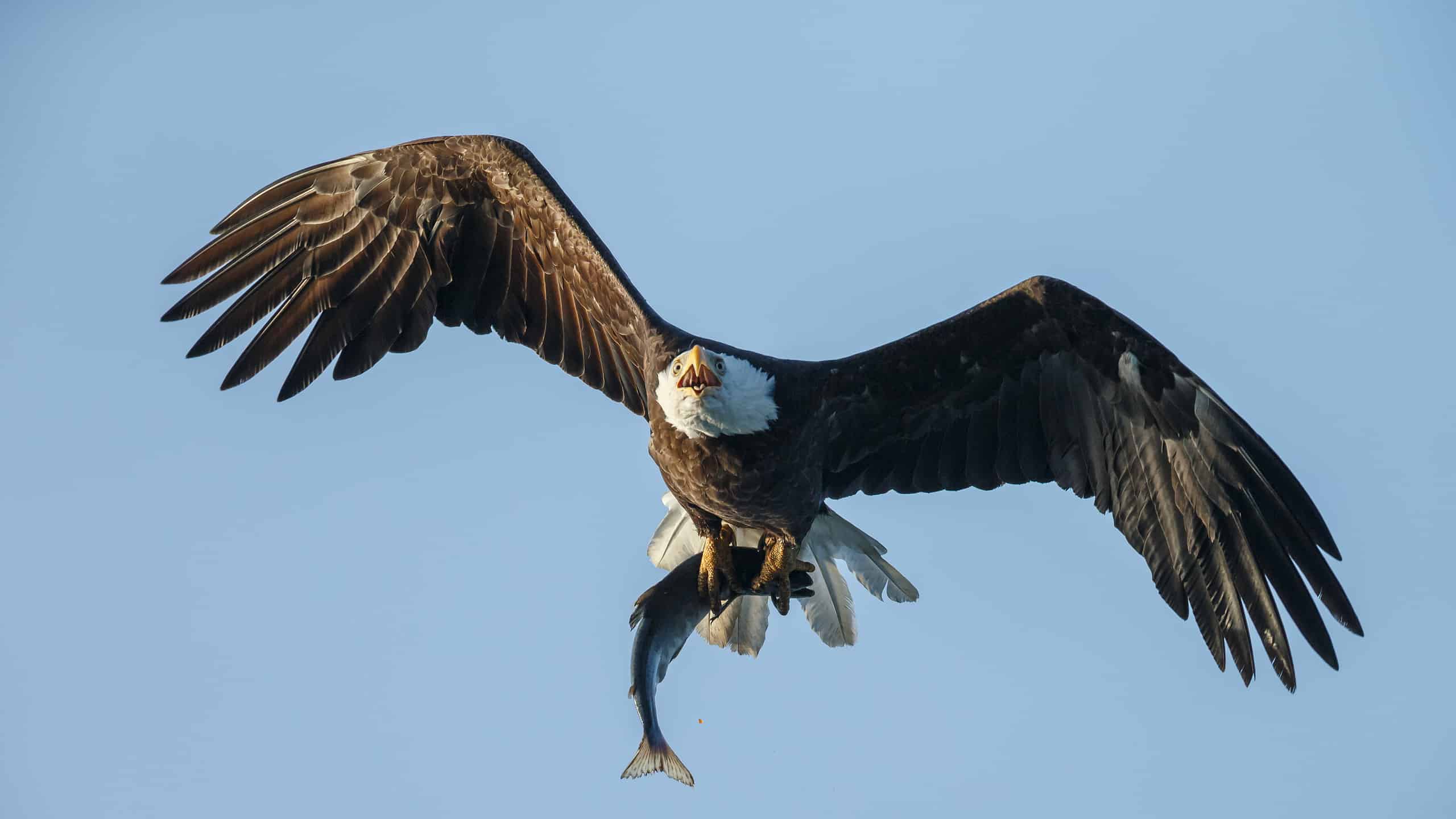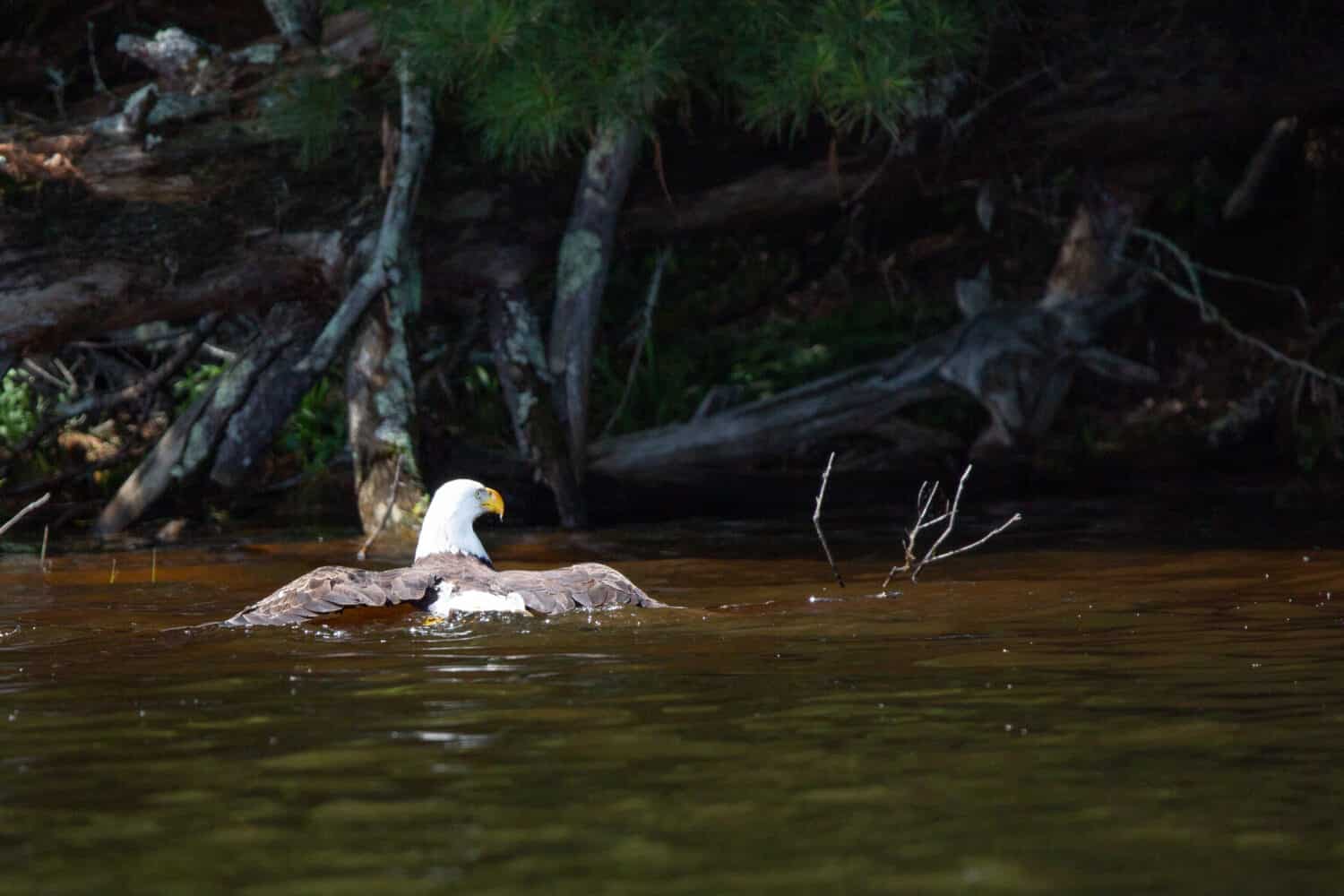Continue reading for our analysis...

You may have seen one of the many breathtaking photographs of a bald eagle diving into the water and catching a fish. However, what happens when that fish is just a little too large for the eagle to gracefully fly away with? As the video below will show, sometimes, eagles will need to get creative when they’ve bit off more than they can chew.
Bald Eagle is Determined to Hang on to Its Catch
In the video, you can see a bald eagle submerged in the water a few feet away from the shore. The bird is flapping its wings, but it isn’t flying. Instead, this bald eagle is swimming! While it may appear as if it is struggling, though, it isn’t for reasons you may think. As it reaches the shallow water at the shore, the eagle becomes airborne and reveals that it is dragging something to shore. On the shore, you can see the fruit of the eagle’s labor: a large fish.

Bald eagles aren’t really bald – they have white heads that contrast with their dark bodies.
©iStock.com/hsun337 – License
Bald Eagles Are Expert Anglers
The bald eagle is a bird of prey – meaning that it hunts and eats other animals. It is an opportunistic feeder and will eat a range of prey including small mammals, snakes, lizards, birds, and frogs. They can be found all over North America – usually near bodies of water containing their favorite food – fish.

Fishing is a bald eagle’s specialty.
©FloridaStock/Shutterstock.com
Eagles have evolved into master anglers and use their keen eyesight to spot fish swimming near the top of the water. These fierce predators are able to calculate how long it will take to reach the fish and then proceed to drop to the surface with terrifying speed to snatch the fish with powerful talons.
Even though bald eagles are more than capable of capturing their own fish – they have been known to skip the fishing step and go for another animal’s catches. Bald eagles have been seen harassing other birds of prey until they drop their prey midair, where they swoop down for the steal. They even snatch fish directly out of other raptors’ talons, the paws of fishing mammals, or the hands of a human angler!
Is it Normal for Eagles to Swim?
When you first think of a bald eagle, you most likely don’t consider them to be strong swimmers. And, while it is true that bald eagles aren’t the most graceful swimmers, as you may have noticed in the video below, they do possess the ability to swim.

Bald eagles are able to use their wings to swim when close to shore.
©Michael Tatman/Shutterstock.com
Bald eagles have a widely diverse diet, with fish and waterfowl often making up a large portion of it. On average, they can lift prey that weighs three to four pounds. When you look at the food that these eagles eat, most of their prey falls into this range, if not well below their threshold. However, the bald eagle occasionally underestimates how large a fish or bird is before catching it. This means that their only two options are to swim or give up their prey.
Now, if an eagle is in the middle of a lake, it may opt for the latter. However, if it is close to shore, as the eagle in the video is, then they can use their wings to propel their bodies forward, an awkward but effective method of swimming.
Bald eagles also have a thick down coat beneath their tell-tale white and brown feathers. Like with waterfowl, this down gives them a sort of buoyancy that allows them to float. This down coat can also protect them while on the water, helping water to escape their plumage rather than cause it to become waterlogged and heavy.
Thank you for reading! Have some feedback for us? Contact the AZ Animals editorial team.






